Nitrogen Optimization Pilot Program (NOPP) participants across Wisconsin have been busy carrying out their planned projects. Check out the project updates below to learn more about the progress being made by many of program participants.
November 7, 2023 - Novak (Soil Types)
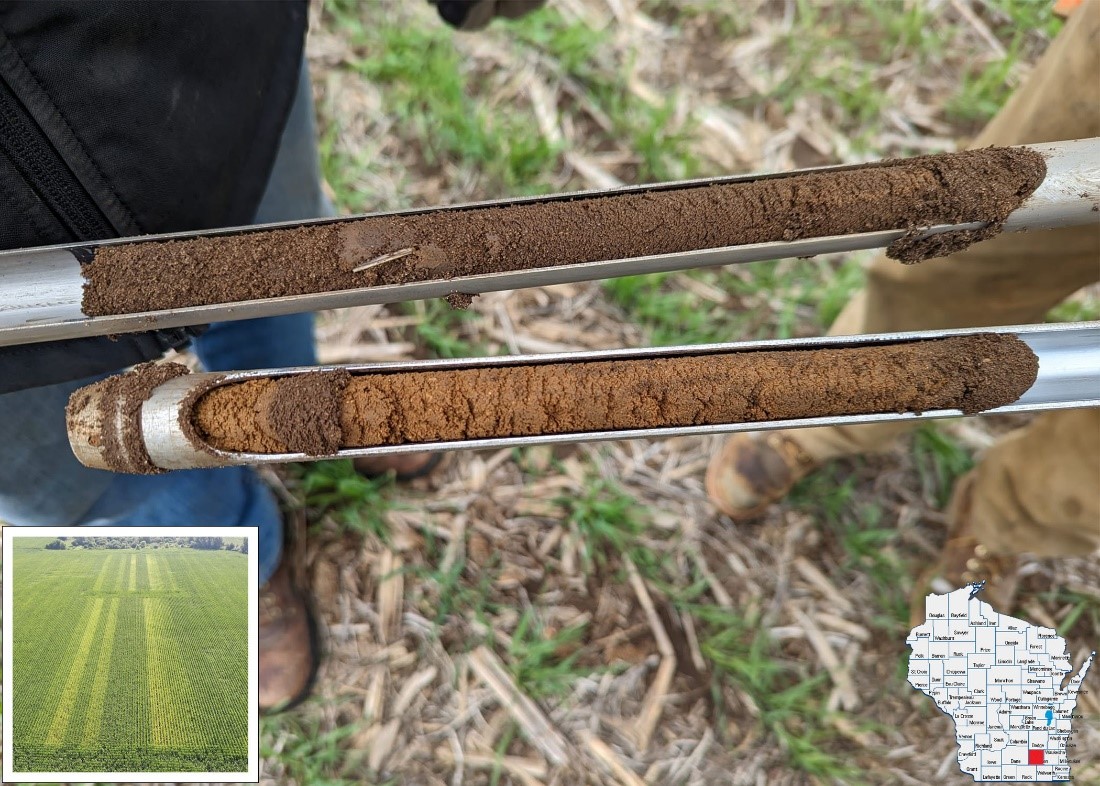
Tom Novak is a 2023 Nitrogen Optimization Pilot Program grant recipient evaluating corn MRTN rates on coarse vs loam soil types. Novak had this to say about his long history of on-farm research and why it’s important to keep asking questions: “Back in the late 90's, I teamed up doing N rate trials with our Jefferson County Crops and Soils agent, Matt Hanson, and we continued trials for the next 10 years. One of the results taught us that being efficient with N use (side-dressing) was extremely important when discussing what the 'correct' N rate should be. This decade of trials also showed us the UW-recommended rates were adequate. However, some things, like non-responsive trials, nagged at us and we never got the 'why' figured out. Flash forward to the present day, and with a good funding source in place, we can run different tests, like preplant N, pre-sidedress N, ear leaf samples, and more, which were too expensive when we had no budget! This will help us understand the 'why' when odd things happen.
The new twist over this two-year project is beyond getting yield data over six N rates; I'm comparing light sandy loam soils to some black loam soils to see if optimum N rates at each yield level is the same, or if not, can we get by with less N on lighter/droughty soils as some variable rate models suggest.”
__________________________________________________________________________________________
October 24, 2023 - Blank

Brendon Blank is a 2023 Nitrogen Optimization Pilot Program grant recipient with a project titled “N rate for best Winter Triticale forage yield, quality, and phosphorous removal". Partnering with three farms in Dodge County, Brendon is hoping to find answers to some of his questions:
"I see winter triticale as a growing interest in dairies and there has been a lot of success with it but, there have also been failures and disappointments, so we want to finetune what makes the system work best. From the nitrogen standpoint, the grasses are unique in the fact that, the more nitrogen you put on, the more you increase protein level of the crop. This makes it more difficult to determine the economic plateau – it's a more dynamic system with more work to figure out where the plateau is. Can we fertilize beyond our yield plateau economically? Is it more economical to fertilize to yield or quality?
I also think about the nutrient management aspect of it from a manure standpoint – can we pull more phosphorus out of the system? From a soil health standpoint, it can be beneficial in the long-term, but [adding a crop] results in a new management system with different timings. If we give up corn silage yield [to accommodate triticale planting], are we getting something back in triticale yield?"
__________________________________________________________________________________________
October 3, 2023 - LASA
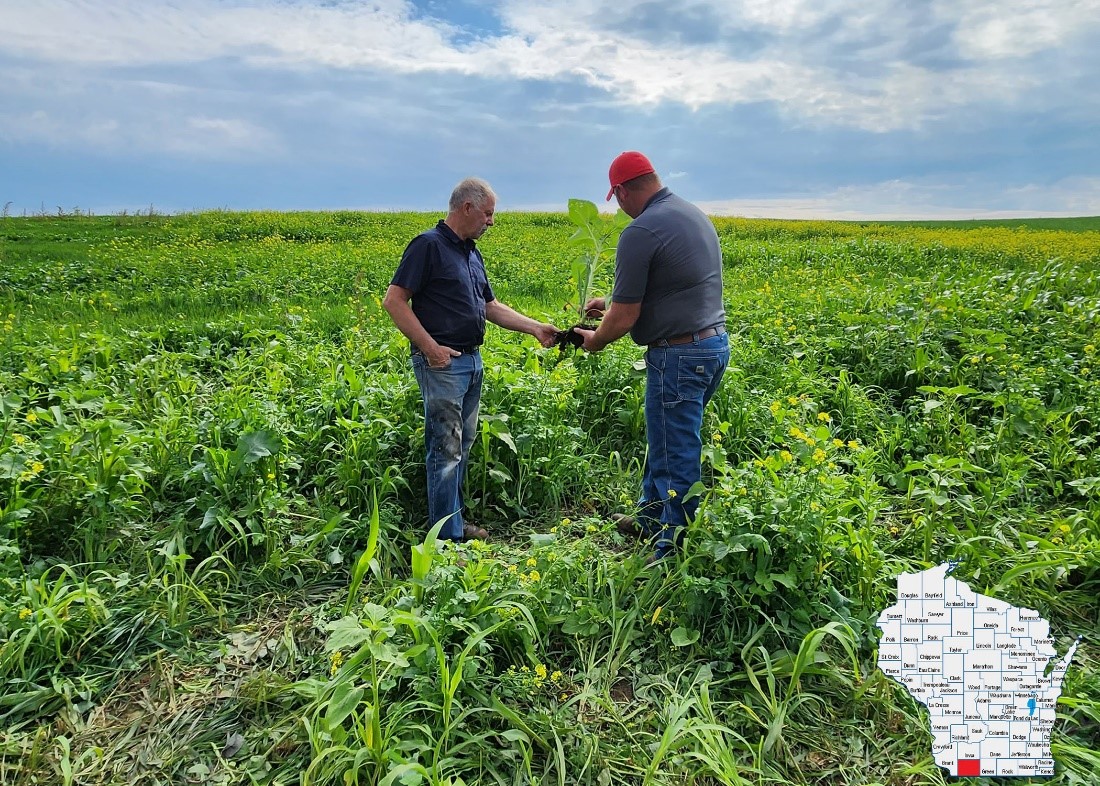
Four farms affiliated with the Lafayette Ag Stewardship Alliance (LASA) are Nitrogen Optimization Pilot Program (NOPP) grant recipients. Their project is designed to explore the following question: “What is the optimum N rate that maximizes profitable corn grain production and limits the risk of N loss to environmental factors when planted green into cereal rye cover crop?"
The group asserts that understanding the N cycle within a cover crop system is paramount to successful N management, noting that the N immobilization rate of cereal grain cover crops is expected to increase as the C:N ratio of cover crops increases.
Another motivating factor for pursuing NOPP funding is the opportunity to conduct local on-farm, field-scale research within the driftless region of Wisconsin. Due to a high risk of soil and nutrient runoff and nutrient leaching in this geography, this project will evaluate the N management requirements necessary to increase acres of cover cropping and no-till across the region. In addition, the ability for producers to conduct field-scale research on-farm offers increased validity and acceptance amongst growers compared to remote, small-plot research.
___________________________________________________________________________________________
September 19, 2023 - Turzinski
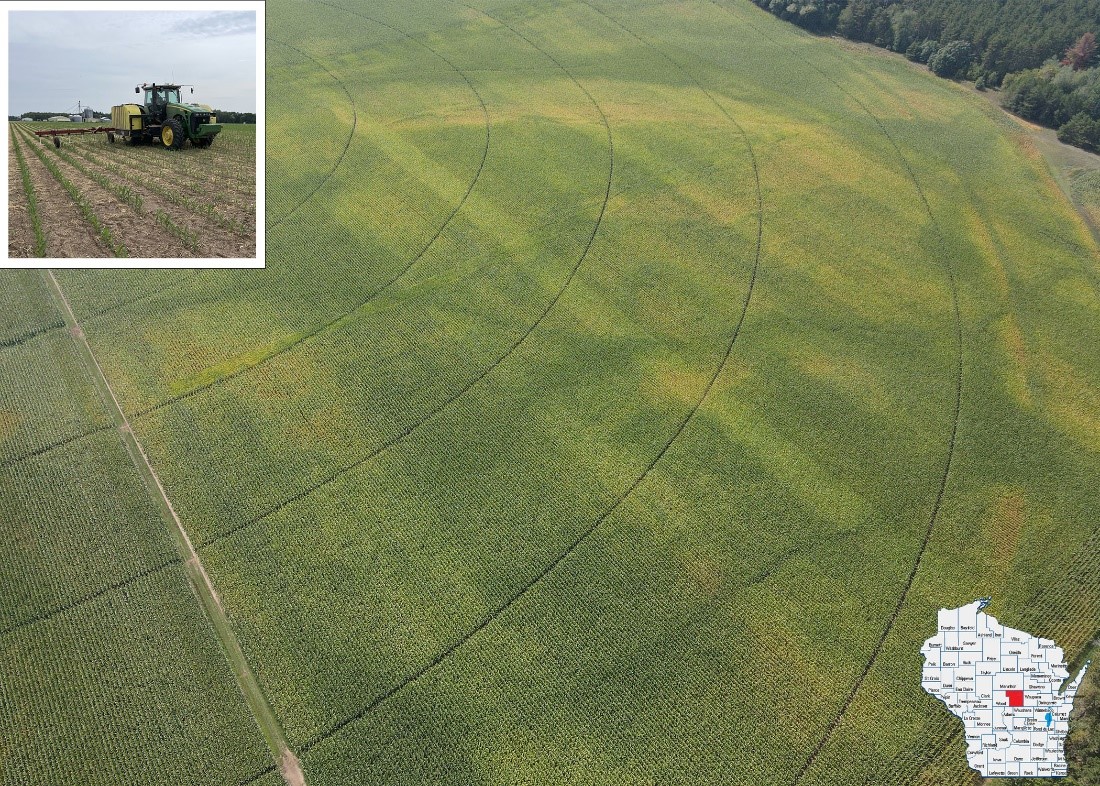
Nitrogen Optimization Pilot Program (NOPP) grantee, Trenton Towne, designed an on-farm project to investigate the benefits of winter grazing to corn yields while optimizing commercial nitrogen applications. After this year's corn is harvested, Towne will allow cattle to graze the trial location all winter and then establish the nitrogen-rate trial in the spring.
When asked what motivated him to design this unique project, Towne had no shortage of reasons: “Commercial nitrogen production uses significant amounts of fossil fuels. The cost of commercial fertilizer to a small farm's budget and to my children's future has motivated us to investigate how historical practices might help our farm reduce the need to use excessive amounts of commercial fertilizer. We also feel that properly managed grazing practices can help rejuvenate the sandy soils of Waushara County.
Our NOPP study looks to reintegrate cattle to the landscape, so that the cows can deposit nutrients where we need them most. We intend to use the practice of bale grazing during the long Wisconsin winters upon a field where corn has been harvested to prepare the soil with all the nutrients necessary for the coming growing season. We will then monitor how a variety of different nitrogen application rates across the field affect corn yields during the next year.
We hope that through this research, we can help small farms in central Wisconsin determine the financial benefits of such a rotational grazing system and hopefully reduce the need to purchase commercial nitrogen and expensive equipment. We believe that the long-term benefits of winter bale grazing in Wisconsin will improve our soil, our environment, our finances and our children's future."
___________________________________________________________________________________________
August 29, 2023 - Towne
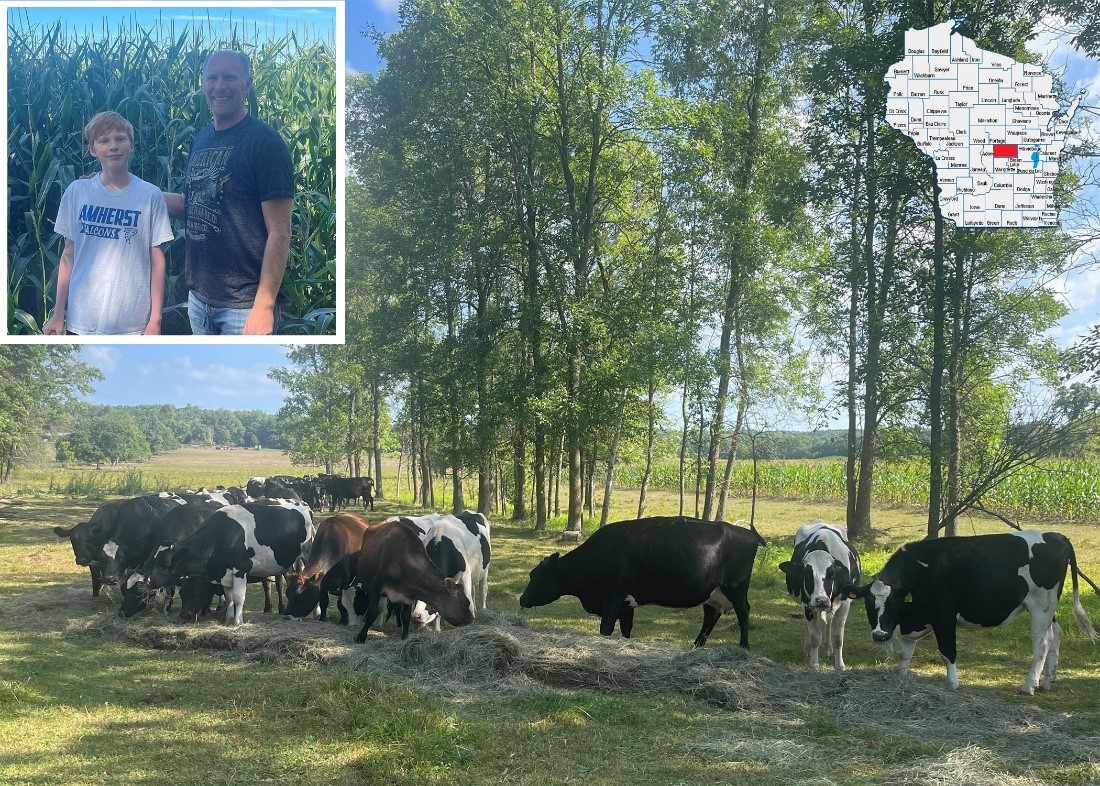
Pictured inset:Trenton Towne and son, Atticus
Nitrogen Optimization Pilot Program (NOPP) grantee, Trenton Towne, designed an on-farm project to investigate the benefits of winter grazing to corn yields while optimizing commercial nitrogen applications. After this year's corn is harvested, Towne will allow cattle to graze the trial location all winter and then establish the nitrogen-rate trial in the spring.
When asked what motivated him to design this unique project, Towne had no shortage of reasons: “Commercial nitrogen production uses significant amounts of fossil fuels. The cost of commercial fertilizer to a small farm's budget and to my children's future has motivated us to investigate how historical practices might help our farm reduce the need to use excessive amounts of commercial fertilizer. We also feel that properly managed grazing practices can help rejuvenate the sandy soils of Waushara County.
Our NOPP study looks to reintegrate cattle to the landscape, so that the cows can deposit nutrients where we need them most. We intend to use the practice of bale grazing during the long Wisconsin winters upon a field where corn has been harvested to prepare the soil with all the nutrients necessary for the coming growing season. We will then monitor how a variety of different nitrogen application rates across the field affect corn yields during the next year.
We hope that through this research, we can help small farms in central Wisconsin determine the financial benefits of such a rotational grazing system and hopefully reduce the need to purchase commercial nitrogen and expensive equipment. We believe that the long-term benefits of winter bale grazing in Wisconsin will improve our soil, our environment, our finances and our children's future."
___________________________________________________________________________________________
August 15, 2023 - Joe Bragger
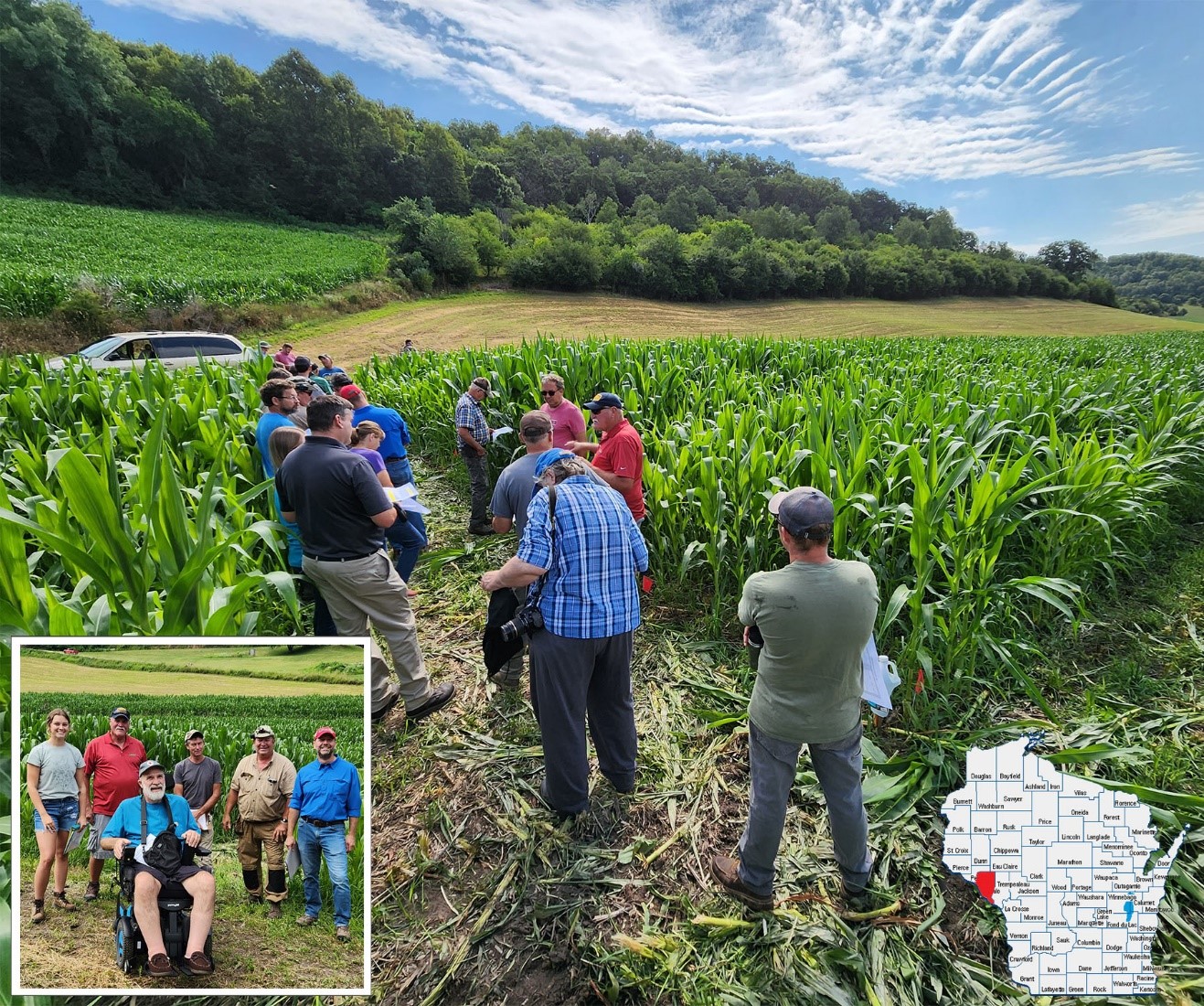
Pictured Inset L to R: Cora Hoffer, Doug Yapp, Carl Duley, Jimmy Ellis, Joe Bragger, Dr. Francisco Arriaga
Nitrogen Optimization Pilot Program (NOPP) grant recipient Joe Bragger, along with fellow producer Jimmy Ellis, are conducting on-farm research investigating the optimization of urea applications when applying poultry litter to corn.
The poultry industry has undergone major changes over the last 20 years and very little research has been conducted on nitrogen availability in poultry litter in that timeframe. At a recent field day hosted at the trial, Jimmy Ellis said they want to “put it to rest once and for all: Is it the manure handling, the housekeeping, what they're feeding the chickens? What has changed?"
As commercial poultry production is extremely important in west central Wisconsin and poultry litter is routinely applied to sensitive soils in this area of the Driftless Region, this two-year project should provide valuable information on the topic.
___________________________________________________________________________________________
August 1, 2023 - McCain
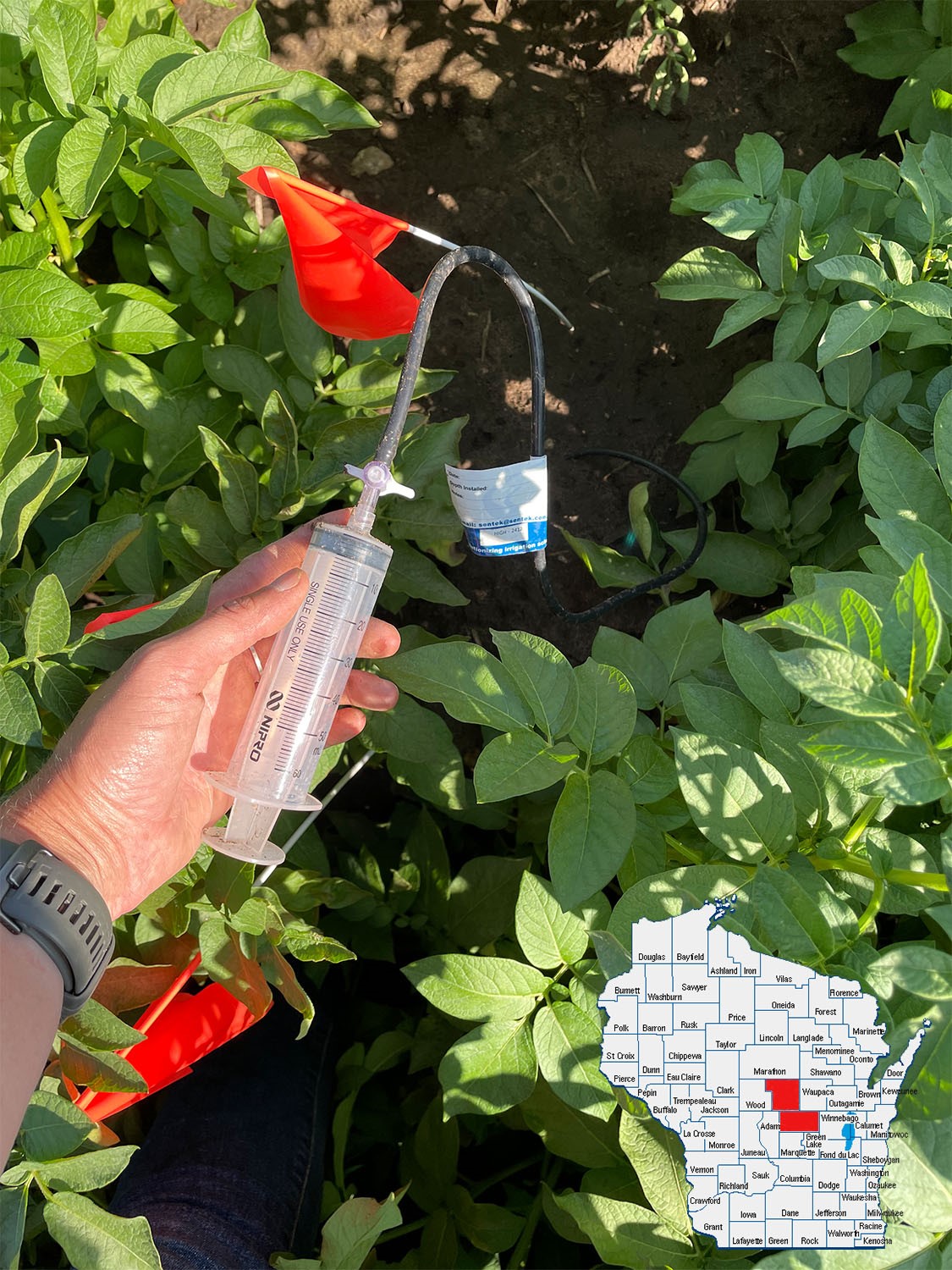
Pictured: A suction cup lysimeter installed within the bounds of the trial to measure water and nutrient movement in the soil.
With their Nitrogen Optimization Pilot Program (NOPP) grant, Coloma Farms & Plover River Farms, in collaboration with McCain Foods, seek to enhance nitrogen management in potatoes.
“Potatoes have a high demand for nitrogen and water, and many are grown in quite sandy soils, which can lead to nitrogen loss via nitrate leaching," says Kelly Verhaalen of McCain Foods. That risk of leaching is the “why" behind this project.
Verhaalen continues: “Potato growers have practiced split nitrogen applications for a long time, but there is still uncertainty to understanding how much nitrogen is lost to leaching from either at planting, hilling, or fertigation applications. Also, nitrogen demand within a season in relation to yield can be quite variable between potato varieties and still needs research. We hope to understand how a specific processing russet variety's yield and quality responds to nitrogen rates and fertigation timings while also measuring the nitrogen balance within the season and how the crop rotation may have influence. Ideally, we'd then be able to focus on more potato varieties and their nitrogen relationship."
__________________________________________________________________________________________
July 18, 2023 - WWCC
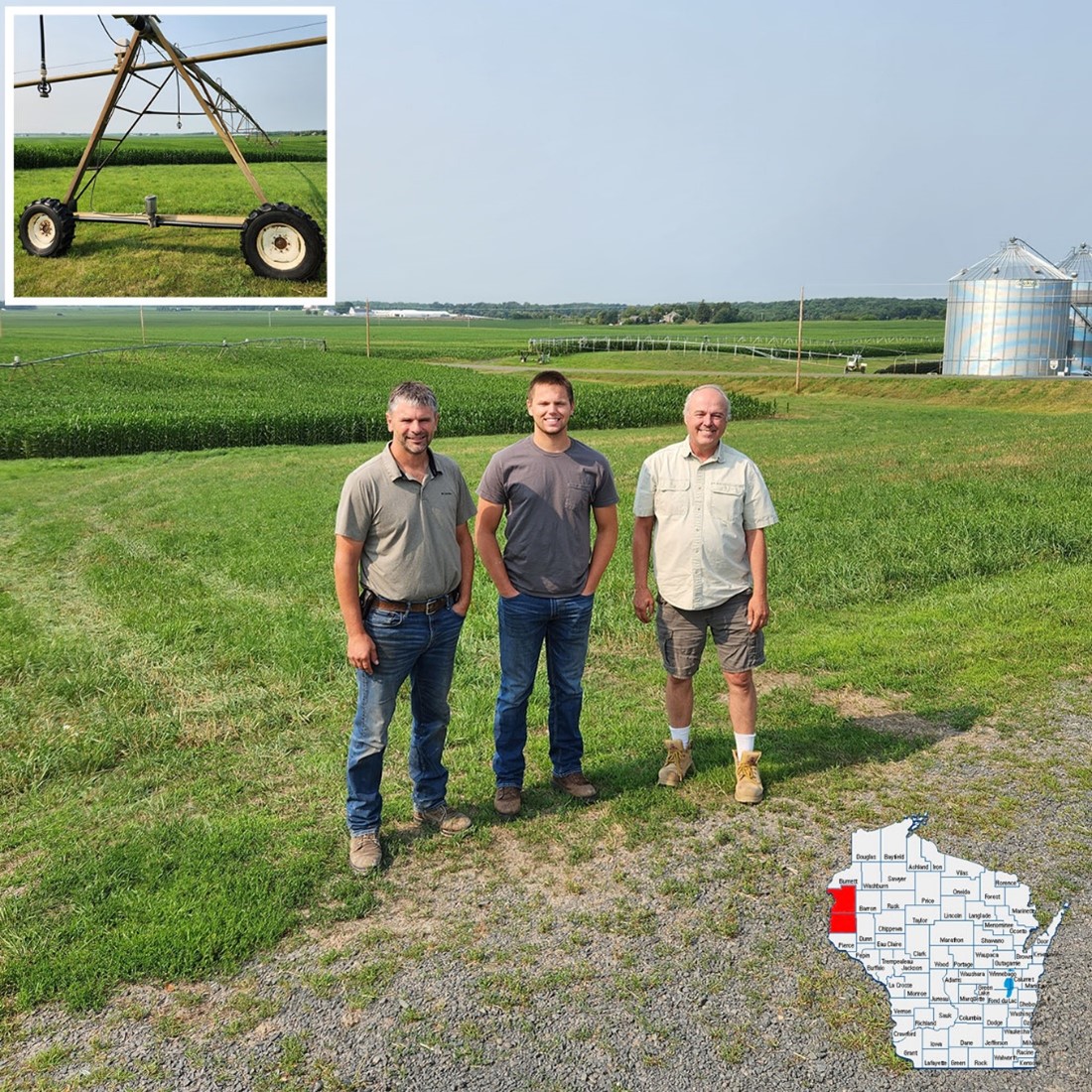
Pictured: Scott Carlson, Nick Carlson, and Dave Tollberg. Not pictured: Ter-Rae Farms.
The Western Wisconsin Conservation Council (WWCC) is a Nitrogen Optimization Pilot Program (NOPP) grant recipient studying nitrogen rates for four years under irrigation in western Wisconsin. The Horse Creek Watershed Council and Dry Run Watershed Council are both represented in this project.
Crop consultant Dave Tollberg had this to say about the project: "We designed this project so that it's not a lot of extra work for the farmers and, because the fields are under irrigation, we'd still have good data on dry years. Lysimeters were installed and will be monitored by Dr. Jill Wasik (UW-River Falls) to measure nitrogen leaching. Dr. Susanne Wiesner (UW-River Falls) will be correlating yield and quality data to remote sensing data. Deep nitrate and Haney samples have been taken to correlate nitrogen recommendations to best nitrogen rate yields."
He continued: "It's all about good, local data for our area that local farmers can use. This is a four-year study to create a good database and understand best management practices. I believe that good yield and water quality can both exist and can benefit everyone."
___________________________________________________________________________________________
June 27, 2023 - Red Cedar
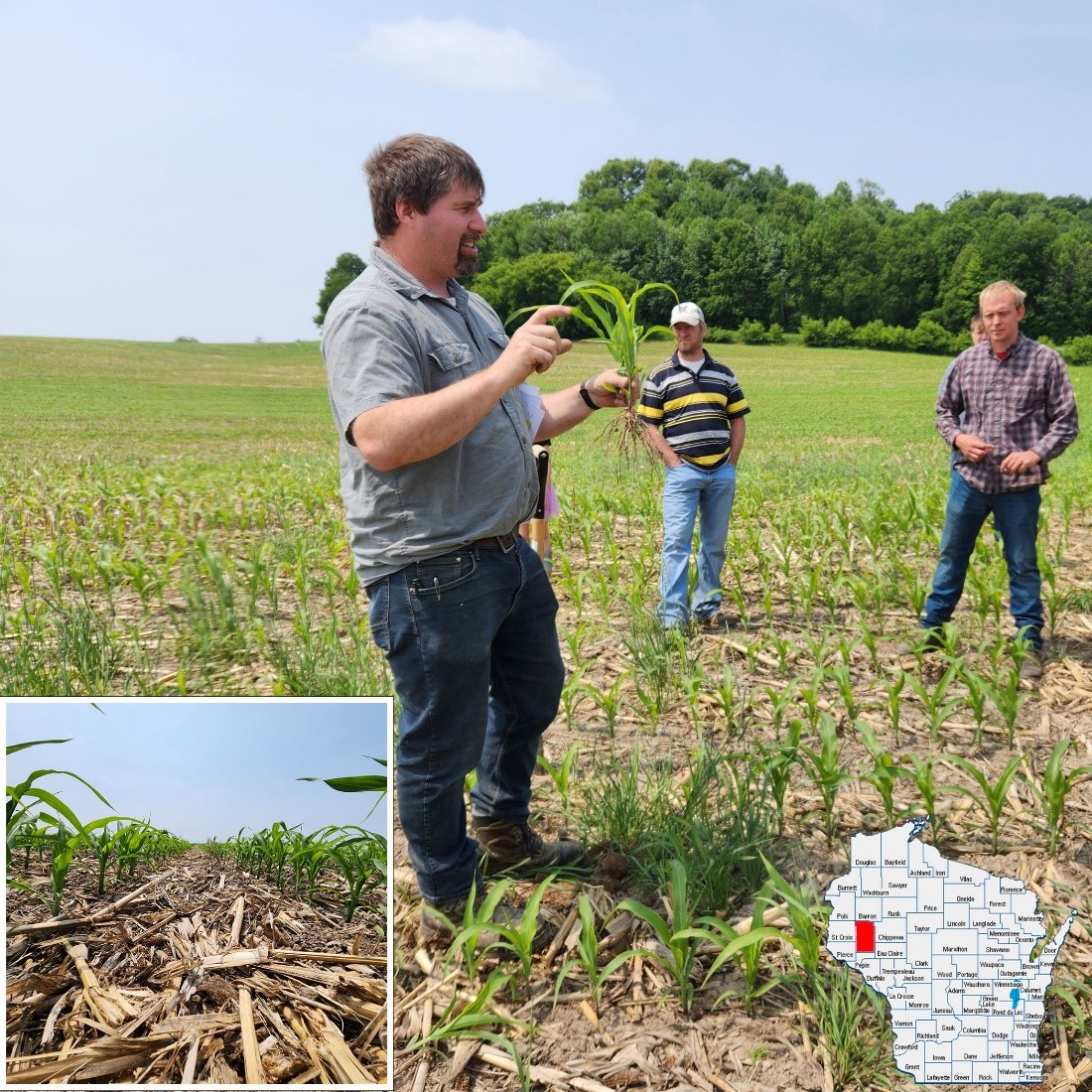
The Red Cedar Conservation Farmers (RCCF) watershed group is a Nitrogen Optimization Pilot Program (NOPP) grant recipient. This group of four producers is studying the effects of cover crop termination and cover crop tillage separately on nitrogen use efficiency.
Tryston Beyrer, a producer on the project said “We found that, through some of our watershed's groundwater sampling, we've had some wells that came back high in nitrate. In general, we have found some of our sandier soils, primarily but solely in this region closer to the Red Cedar, have been a little bit higher in nitrate, so if we can better optimize our nitrogen recommendations through the NOPP group, we might have some new interesting findings that we can share with the group and surrounding areas. Working with UW and with the Red Cedar Conservation Farmers group has been good and we've got a few different producers – Mike, myself, Jeco, and Bill. All of us have different fields that are conducting trials to increase nitrogen efficiency while considering the effect of other management practices such as cover crops, tillage, etc."
Dunn County Land and Water Conservation Division employee Tina Barone is supporting the project as the Fiscal Manager. She worked with the four RCCF members to apply for the grant and will manage the grant by helping with sampling, managing data collection, and making payments for the group.
___________________________________________________________________________________________
June 13, 2023 - Weichmann
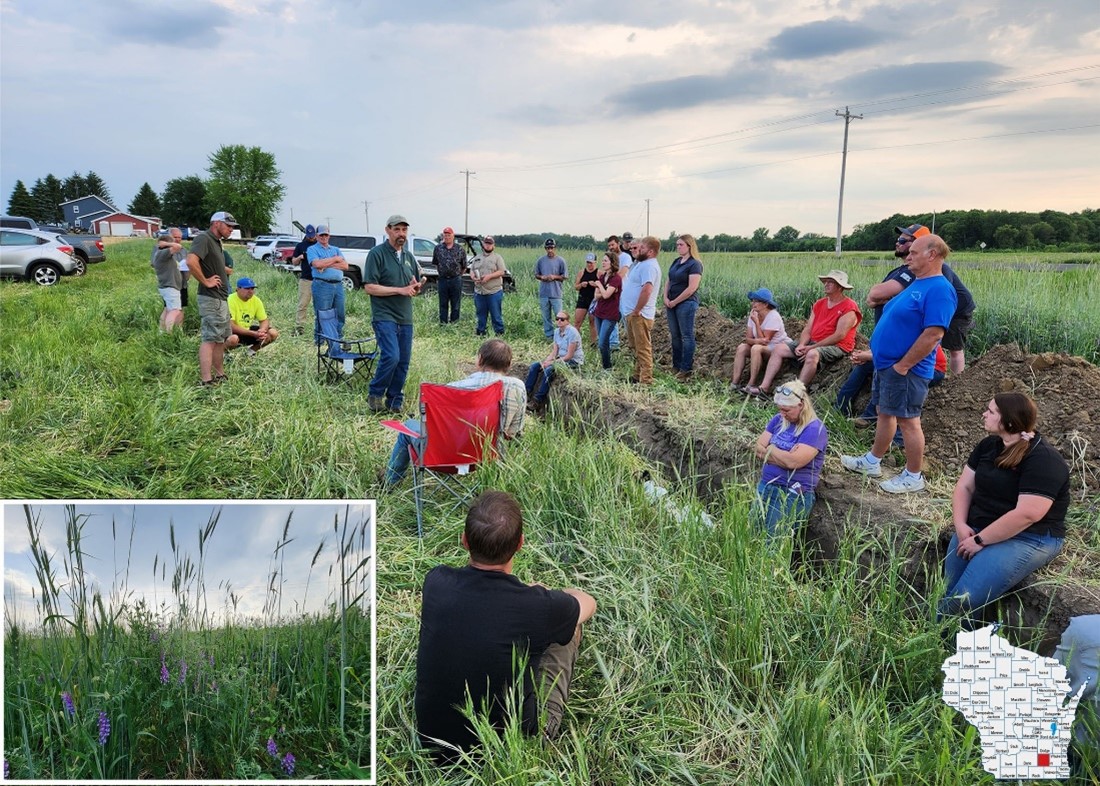
Nitrogen Optimization Pilot Program (NOPP) grant recipient Dean Weichmann is exploring nitrogen crediting to corn from two different cover crop mixes.
In response to why he chose to conduct on-farm research, Dean insightfully says “We need to continually update research, without data it's like driving in the dark and turning out the lights. Climate is changing, agronomy is changing. Our needs change. Costs, including what we recognize as the cost of runoff and pollution change as well."
Crop consultant Tom Novak collaborates on Dean's project and notes that “Historically we have had reliable UW-generated data on N credits from alfalfa and frost-seeded red clover in wheat. What's missing is how much N can we generate from seeding high-legume mixes in late July after wheat grain and straw are harvested? NOPP Trials such as Dean's will move us from testimonials of what we think happens to knowing what happens."
___________________________________________________________________________________________
May 30, 2023 - Albright
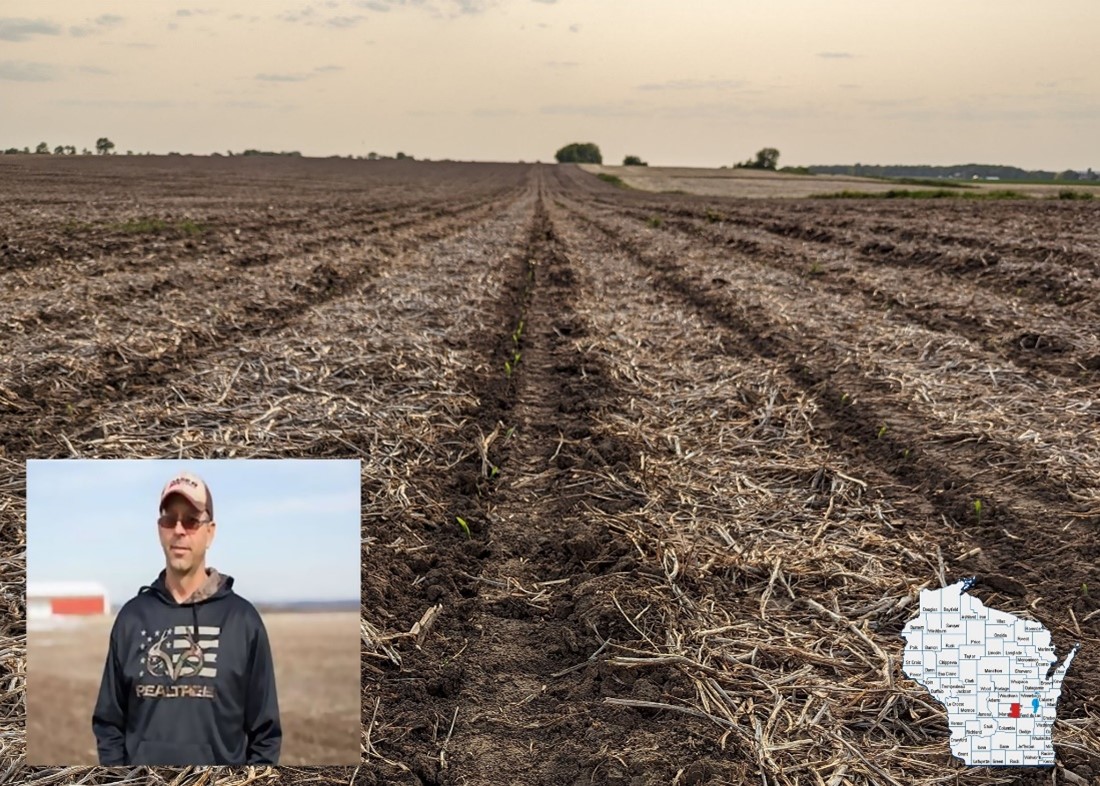
Dave Albright is a Nitrogen Optimization Pilot Program (NOPP) grant recipient exploring variable nitrogen application on his farm using the Augmenta System. Dave is working closely with Extension on his NOPP project.
When asked about his inspiration for applying for an NOPP grant, Dave said “I felt like farming in the Green Lake watershed. I want to be able to use the least amount of nitrogen and other fertilizer while still getting a good crop. This study is one way to figure out what those parameters might be."
UW-Extension Educator Natasha Paris said “I am excited to work with Dave and I think this project is interesting because it explores a new technology in the world of nitrogen optimization in an on-farm context."
___________________________________________________________________________________________
May 16, 2023 - Cranberry Creek
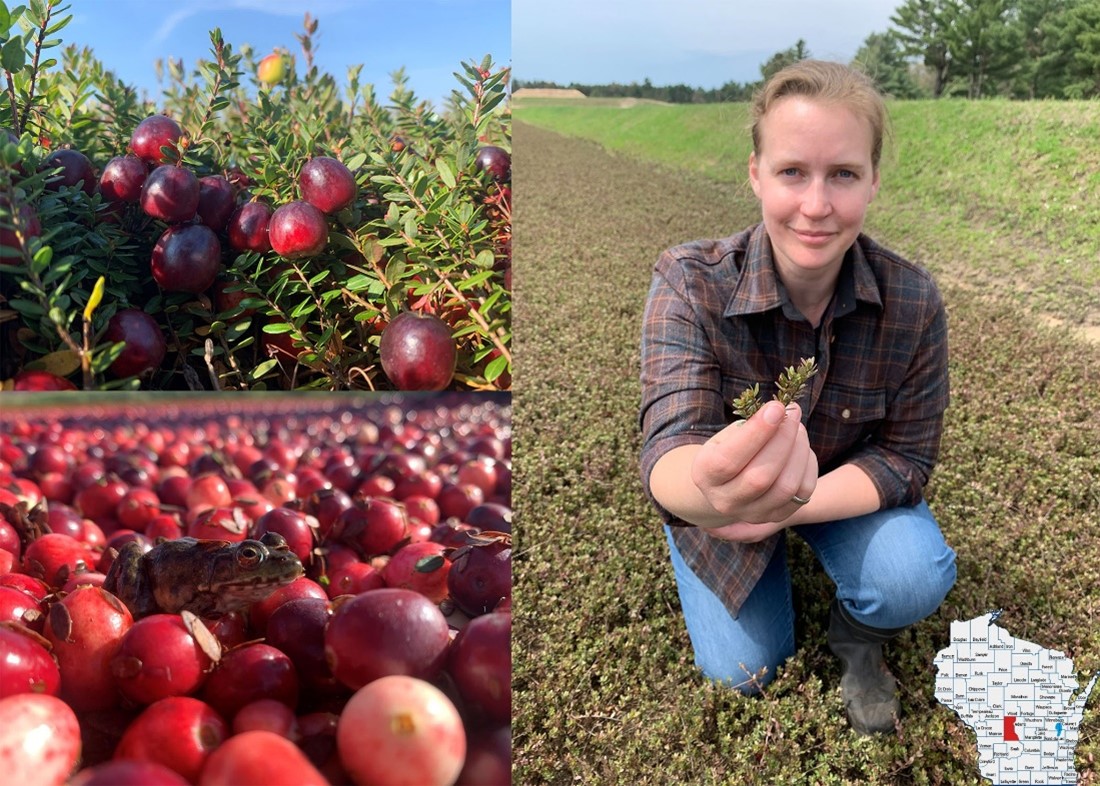
Nicole Hansen with Cranberry Creek is a Nitrogen Optimization Pilot Program (NOPP) grant recipient investigating nitrogen application timing in Wisconsin cranberry marshes. Nicole is working closely with UW-Extension on her NOPP project.
When asked about the implications of on-farm research for cranberries, Allison Jonjak, Cranberry Outreach Specialist with the Division of Extension (pictured here) had this to say: “University research on nitrogen fertilizer timing in cranberries is difficult because application logistics are hard to replicate in a lab, and nitrogen timing is very reliant on a grower's logistics capabilities. The provision of funds for field-scale, on-marsh research using cranberry growers' actual application equipment is the first opportunity we have had to research nitrogen application timing in a way that will help growers become even better stewards of their businesses, vines, land, and water."
___________________________________________________________________________________________
May 2, 2023 - Ailts
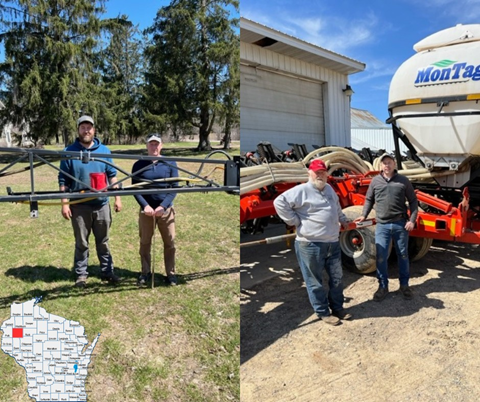
The Nitrogen Optimization Pilot Project (NOPP) is underway! Logan Dwyer, Joe Ailts, Andy Bensend, and his farm manager Josh Schloneger are NOPP grant recipients who will explore organic and inorganic nitrogen soil testing to reduce nitrogen applications.
When asked why he chose to apply for funding to perform on-farm trials, crop consultant Joe Ailts said “Updates to the way we assess and manage nitrogen in corn are long overdue. The NOPP grant has provided the framework, funding, and motivation to determine if and how emerging nitrogen measures can be used to 'do nitrogen better.'"
Producer Andy Bensend added “How often do we get to build on our business efficiency while also providing a real way to help our industry be more environmentally sound?"
<< Back to the NOPP homepage